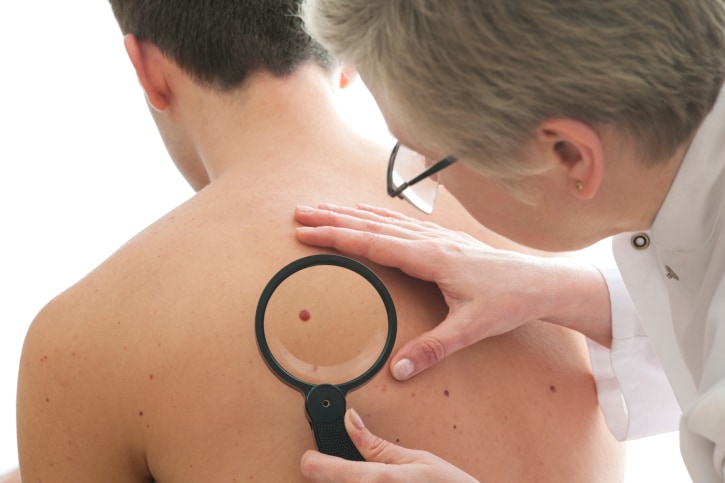Marilyn Monroe and Cindy Crawford, two of the most unequivocally beautiful women of the last century, both had something that set them apart from the rest of the crowd: moles. More specifically, their moles were referred to as beauty marks (or melanocytic neva). Regardless of where they are, moles, just like other skin marks, need to be monitored. Moles are clusters of pigmented skin cells that form on the skin’s surface. These are usually brown or pink in color; they can appear over time, they can fade or even change shape. The warning signs of melanoma, or malignant skin cancer, can be signaled by the changes in how your moles look.
This is why it is so imperative to remember to check your body regularly. Sometimes it is difficult to remember to do a full body check. Start a self-examination by checking your face, including behind the ears and even inside of the mouth. Do not forget to check in your hair. Adults can have dozens of moles on average, so be sure not to panic if you notice new moles. For men, you need to double check you torso especially and women need to be sure to double check your legs.
It also does not hurt to have a second set of eyes if you have mobility issues or if you have are unsure if you will notice changes in skin marks, moles, general pigment, or texture. A full body examination is something easy that your dermatologist can do for you to reduce your anxiety. Only a dermatologist can give you a credible opinion about how to treat or to excise moles. Most moles are benign, but in the cases where they are not, early detection and treatment by your dermatologist will give you a much greater chance of beating those moles that are cancerous. Your dermatologist may take a biopsy of certain moles or remove them completely. If you have previously had moles excised, keeping a check on other signs of more potentially dangerous cancers that metastasize.
When checking moles, remember ABCDE: (1) asymmetry, (2) borders; (3) color; (4) diameter; and (5) evolving blemish. Regarding symmetry, you should be able to bisect a mole and the two halves should match. Signs of asymmetry should be reported. Mole borders should be solid and regular. For those with lighter skin tones, a lot of freckles, or lighter colored moles, it can be difficult to notice changes in border. As stated previously, moles can have a variety of colors. However, if you notice one that is particularly dark or does not have a consistent color, you need to bring it to the attention of your dermatologist. Diameter is another important metric in assessing if it is time to have your dermatologist take a closer look. Five millimeters or one quarter inch should be the biggest that your moles get; if they are growing in size beyond this, it can be a sign of a more significant condition. Birth marks are not moles and may be larger than your moles. Evolving moles – growth or otherwise – can be concerning.
Come see Dr. Guenthner and his staff at his office whether you’re living in Cicero, Crawfordsville, Noblesville, or Indianapolis. You can also find other locations around the State. We look forward to serving you.
Disclaim: This blog provides general information and discussion about medical, cosmetic, mohs, and surgical dermatology. The words and other content provided in this blog, and in any linked materials, are not intended and should not be construed as medical advice. If the reader or any other person has a medical concern, he or she should consult with an appropriately-licensed dermatologist or other health care worker.
